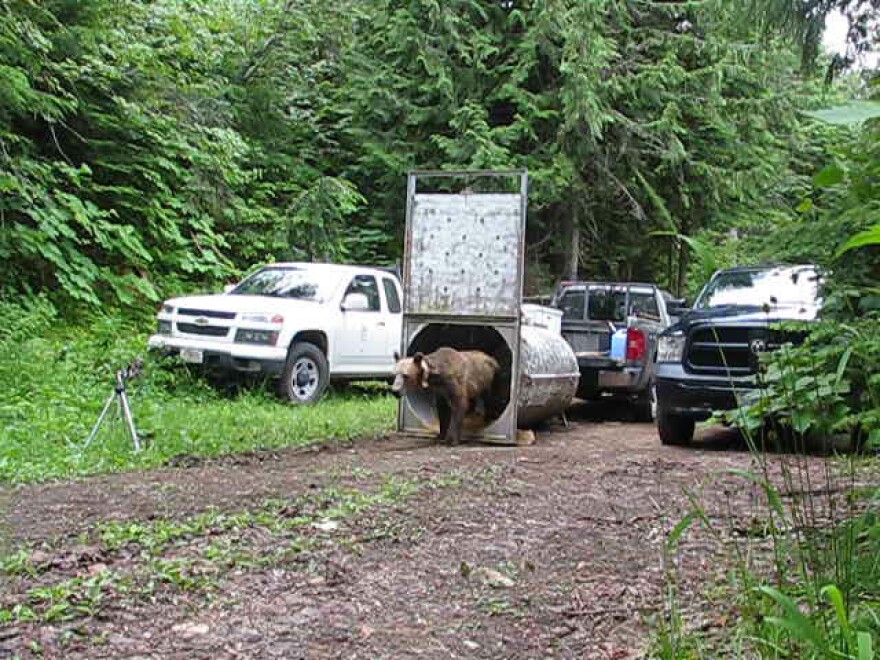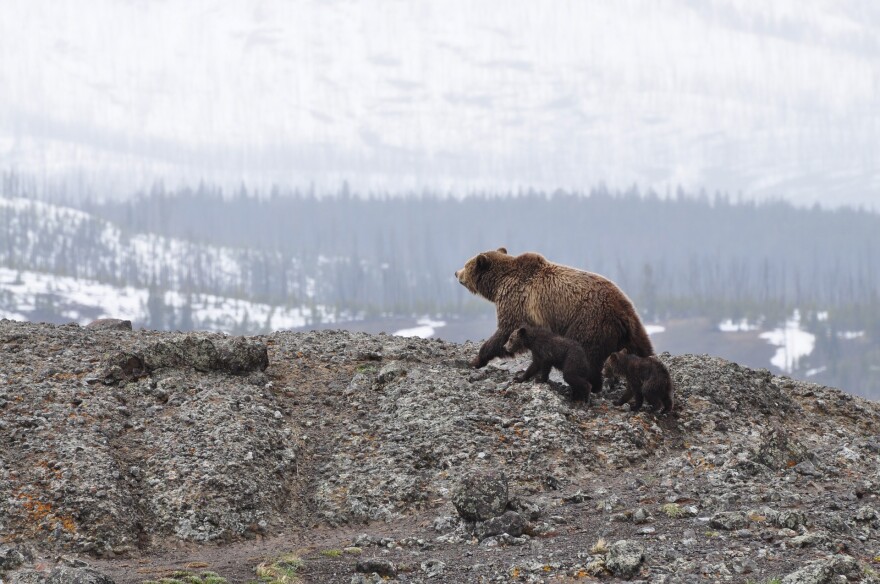A record number of grizzly bears were killed this year in and around Glacier National Park. It’s the second year in a row of record deaths for the threatened species in the area, which is home to more grizzlies than anywhere in the lower 48 states.
But there’s disagreement over whether two years of record bear deaths should raise alarm bells.
Independent researchers and conservationists like Mike Bader say the expanding grizzly bear population in and around the Northern Continental Divide Ecosystem (NCDE) is driving bears into high-risk human populated areas.
"So there’s a lot of things that are putting pressure on bears. A lot more recreation, mountain biking, on and on," he says.
Bader argues that the grizzly population here needs to at least double before removing them from the endangered species list. Since 2018 there have been 102 mortalities in the NCDE — at least 84 of those human-related — making the last two years record-breaking. In the decade prior to 2018, the number of mortalities never exceeded 34 bears. Bader says that concerns him.
"Because you have to be worried that it could become the new normal unless it's curbed. And if it becomes the new normal, we’re going in reverse."
Many of the recent deaths are bears getting hit by cars and trains or being euthanized after killing livestock. Another eight have been moved to other ecosystems or sent to zoos by wildlife managers.

But rancher Kristen Kipp, who lives on the Blackfeet Reservation, says there are still more than enough bears.
"The population of the grizzlies here in this area, they are definitely recovered. The numbers will say that," Kipp says.
State and federal wildlife agencies estimate there are nearly 1,050 grizzlies in the NCDE, 36 percent more than in 2004.
Kipp says bears are moving out of the Rocky Mountains onto the eastern plains where she lives.
"My almost four-year-old when she was a baby, the sound of her crying brought in a grizzly 10 feet from my house."
It’s not just human safety that’s an issue. Ranchers like Kipp point to bears killing more and more livestock as another reason for removing the population from the endangered species list.
Montana U.S. Rep. Greg Gianforte agrees. He says delisting would allow state wildlife officials to more aggressively manage grizzlies. As part of that push, Gianforte brought U.S. Interior Secretary David Bernhardt to Montana in October. He wanted Bernhardt to hear firsthand from locals calling for delisting.
Bernhardt said that management practices should be changed regardless of grizzlies’ endangered species status.
"We have some immediate challenges that we need to think about that are different today than they were just a few years ago, and our thinking probably needs to reflect that."
Related: Timeline: A History Of Grizzly Bear Recovery In The Lower 48 States
The Interior Department’s efforts to remove Yellowstone grizzlies from the endangered species list have been tied up in federal court since 2017. Bernhardt said efforts to delist NCDE bears are still moving forward despite the litigation.

Some bear biologists outside the federal government say there still aren’t enough bears to delist now. State management, they worry, would lead to more bears being killed, including in trophy hunts. They point to the spike in grizzly mortalities over the past two years as another reason not to delist grizzlies in the NCDE.
Montana Fish, Wildlife and Parks bear biologist Cecily Costello says the deaths are a sign that younger grizzlies are seeking out habitat in more populated areas in order to avoid older grizzlies with established home ranges in the core of the ecosystem.
"The population itself is increasing over time, and if you look at mortality as a proportion of that population, you would expect it to increase."
She contends that delisting wouldn’t increase grizzly mortalities — human-caused or otherwise.
"The job, regardless of their status, is always trying to reduce conflict, minimize human-caused mortality so that it’s not adversely affecting their population."
And Costello isn’t ready to call the spike in grizzly deaths a trend after two years, but even if it is, she says those numbers are sustainable.


